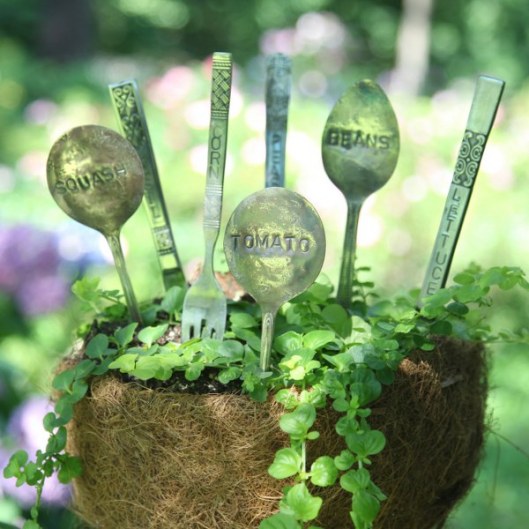
There's no getting around it: If you have a garden, you're going to have weeds. They are the
bane of my existence in my yard. Some start from seeds that have been dormant for years,
some are dropped by animals, and others blow in on the wind or piggyback on garden transplants.
Weeds rob plants of moisture and nutrients. With that happening, it gives insects and disease
to grab a hold of the plants you want to keep. Here are some ways to cope with the
weeds you have an stop new infestations before they start.
Focus on stressed or barren areas first. With the lack of rain that we've been having
here where I live, I've noticed that the weeds are doing well while my flowers,
vegetables and grass are not doing so well. Pull up weeds as soon as you can spot them.
The bigger they get, the harder they are to yank out. If you ignore them long enough,
they'll go to seed and you'll end up with more weeds.
You can kill weeds with herbicides, chemical-free methods or a combination of the two.
With the chemicals, you can have quick results but you have the danger
of damaging some of the plants you want to keep. Chemical-free methods
are safer but they do take longer to work.
- Black plastic - It does not allow any light to get to the leaves and it generates heat, cooking the seeds close to the surface. Cover your garden with the plastic, anchor and just do the waiting game. The longer you wait the better.
- Clear plastic - Cover the garden soil with it for several weeks. The greenhouse effect will make the weed seeds come up. Cultivate to remove the weeds.
- Newspaper - Anchor several layers of paper with wood chips or mulch in the fall. This blocks the light and it kills the plants beneath it. I used this method to kill a couple of dandelions in my sedum garden and it worked great. I had to be patient but it did do the job and the dandelions have never come back.
- Cultivation - Tilling removes the leaves of the weeds. You just need to be patient because this increases the weeds at first because buried seeds surface and chopped weeds sprout into new plants. Cultivate once a month for at least one season. Don't start cultivating if you're not going to follow through. If you quit, you'll have a whole lot more weeds than when you started.
- Garden tools - Hoes, spades and cultivators pull out weeds. almost any hand tool with a sharp edge will work. Just dig in and remove the weeds.
- Mulch - Leaves, pine needs, wood chips and other organic materials help prevent weeds from sprouting. They help conserve moisture and improve the soil as they break down.
- Chemicals - Roundup is fast acting and kills the tops and roots of whatever it touches. It does not discriminate as to which are weeds and which are the desired plants. Selective herbicides kill certain plants. Pre-emergents, like Preen, kill the seeds before they have a chance to germinate. With your new beds, spray them with a total vegetation killer on a non-windy day. Or you can paint or wipe on the leaves. As always, READ the label before you start. Always protect your eyes and skin.
So no matter which you choose, be consistent and you'll have the garden that you want.

This picture inspired me of what my garden will look like after I'm done working on it.










































